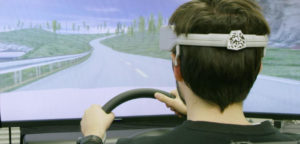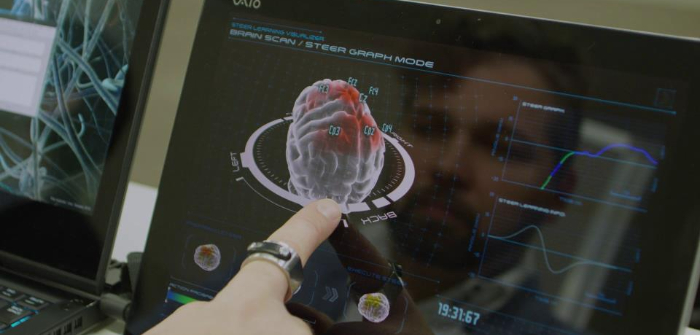Nissan is demonstrating at CES this week a revolutionary system that is currently under development called Brain-to-Vehicle (B2V). This intelligent technology uses brain decoding to predict a driver’s actions and detect discomfort, enabling the vehicle to adapt accordingly and react to situations quicker.
“When most people think about autonomous driving, they have a very impersonal vision of the future, where humans relinquish control to the machines. Yet B2V technology does the opposite, by using signals from their own brain to make the drive even more exciting and enjoyable,” said Nissan executive VP Daniele Schillaci.
By catching signs that the driver’s brain is about to initiate a movement – such as turning the steering wheel or pushing the accelerator pedal – driver assist technologies can begin the action more quickly. This can improve reaction times and enhance manual driving.
By detecting and evaluating driver discomfort, artificial intelligence can change the driving configuration or driving style when in autonomous mode.
The driver wears a device that measures brain wave activity, which is then analyzed by autonomous systems. By anticipating intended movement, the systems can take actions 0.2 to 0.5 seconds faster than the driver, while remaining largely imperceptible.
Other possible uses include adjusting the vehicle’s internal environment, said Dr Lucian Gheorghe, senior innovation researcher at the Nissan Research Center in Japan, who is heading up the B2V research. For example, the technology can use augmented reality to adjust what the driver sees and create a more relaxing environment.

“The potential applications of the technology are incredible. This research will be a catalyst for more Nissan innovation inside our vehicles in the years to come.”


